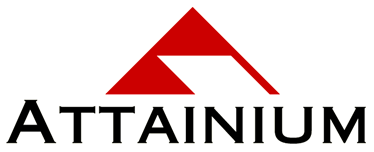The members of the New York affiliate of the Building Owners and Managers’ Association (BOMA) are accountable for the safety, physical well-being, and security of New York City’s three million office tenants and 400 million square feet of office space. Little wonder, then, that disaster response and recovery are among their chief concerns. Attainium’s “The Disaster Experience” training was a natural choice as members continually seek to improve their skills in these critical areas.
“Trophy buildings have always recognized the importance of disaster response and recovery,” said Roberta McGowan, CAE, BOMA NY’s executive director, “but, since the 1993 World Trade Center bombing and the 9/11 terrorist strikes, the issue has become critically important to all of our buildings. It’s not just the trophy buildings anymore. On 9/11, first responders, of course, focused their efforts on the WTC buildings, and our members were responsible for evacuating more than 100,000 people from buildings in the immediate area.”
“BOMA NY members are concerned about anything that affects their tenants and their buildings,” McGowan said, “so we run a lot of educational programs to tackle critical issues.” McGowan, who had participated in The Disaster Experience conducted by Attainium at ASAE’s annual conference, felt that the company’s program brought the realities of disaster response to the forefront in a unique and authentic way and that BOMA NY members would benefit from the experience. The Disaster Experience is extremely realistic, according to McGowan.
“The simulation is designed to help participants identify and reinforce their strengths and surface any weaknesses through response to disaster and emergency situations created for their specific industry,” said Bob Mellinger, Attainium Corp’s president. “It tests their communication and decision-making skills while assessing their ability to respond under stress. Participants have to do things fast and make decisions with information that is not always complete or accurate. Learning occurs throughout the session, but some of the most valuable insights occur in the debriefing section of the program, where participants get to discuss and assess what happened.”
“In commercial real estate, safety is our number one priority and we continually plan for emergency response,” said Louis Trimboli, senior real estate manager for CB Richard Ellis Inc. in New York City. Trimboli is a BOMA NY member who also serves as co-chairman of the BOMA Security Task Force. ”The value of the simulation is that it allows you to execute the strategic part of your emergency management plan and see how well you do. I brought four-fifths of my emergency management team to the simulation so they could get a better understanding of how the actual response could point up what works and what doesn’t when the plan is tested,” Trimboli said.
Attainium’s approach to creating the simulation, McGowan said, was to interview BOMA NY members in order to customize the simulation for their unique situations. Members were encouraged to bring their chief and building engineers, as well as the individuals responsible for fire safety and tenant relations. “The day after the program was to be held,” McGowan said, “was the target date for a potential engineers’ strike, but everyone showed up anyway. That’s how important this issue is.”
The simulation took participants through an event-filled day in the life of a New York building manager and the staff, including security, engineering, housekeeping, life safety, etc. After they were assigned roles and teams, participants were provided with a minimum of information about what was happening, just as they would be if the events were really occurring. The scenario unfolded bit by bit and the teams had to react to what was going on with only the information provided, plus their skills, instincts, and training.
“The training is composed of events that occur in the normal course of business… a series of realistic occurrences that tax the system in terms of personnel and strategy,” Trimboli said “It doesn’t go outside the box, but it tests your ability to respond to multiple events that could very well occur in the sequence presented. In a post 9/11 world, everything is about being able to respond to multiple events,” he said, “and the simulation provides a safe, controlled environment in which to evaluate your response and see where you might need to do more or do something differently.”
“As the events unfold, we see an increase in participants’ stress levels increase as their response mechanisms are tested to the limit,” Mellinger said. “Their resulting decisions reflect their previous planning and training and tend to point out where there was insufficient information, communication or resources. The goal, of course, is that they will use these results as the basis for changes in their response plan.”
“The comments we got back on the program were amazing,” McGowan said. “Many attendees said it was the most valuable program of its kind they had attended.” Because the participants got the opportunity to play roles they didn’t normally play, their perspective of the entire situation was broadened. The simulation offered lots of opportunities to be educated on the entire disaster process.”
Planning for emergency management or response is a critical component of commercial building management, and it’s important to have a plan that you know will work when the time comes. A plan that is drawn up, stored, and never tested could result in loss of life and property and decrease the likelihood of recovery in a reasonable time period. Or, to put it in Louis Trimboli’s words, “It’s all about training, education, and awareness.”
# # #

